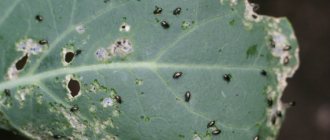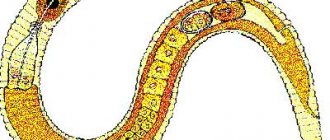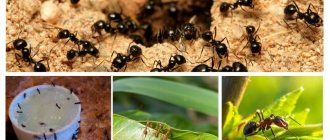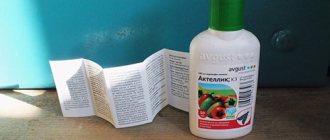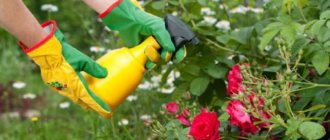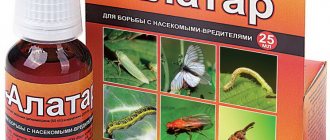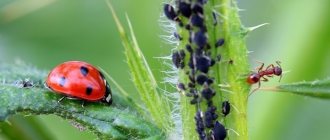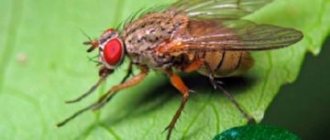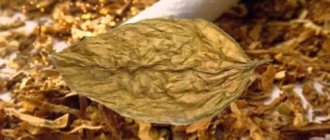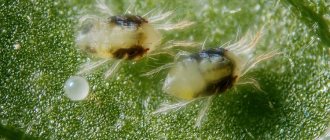Loading... In pest control, folk remedies are, of course, good, but not always effective.
At the initial stages, when there are still few insects and they have not had time to reproduce, you can try to do without chemicals. However, when the scale of the damage becomes critical, it is impossible to do without special drugs. And here insecticides for indoor plants come to the aid of gardeners. How to use them correctly and which means are the most effective, but at the same time have a gentle effect on flowers? Article on the topic: Intavir - instructions for use!
General recommendations for the use of insecticides
Whatever drug is used, it is important to adhere to certain rules that will help protect both the grower and his plants. These include:
- During processing, you must wear gloves and a respirator.
- It is better to work in the fresh air, taking flowers to the balcony or outside.
- Strictly follow the instructions for preparing the solution to avoid overdose.
- When using for a long time, alternate medications to avoid addiction.
If several plants require treatment, you should check the effect of the drug on one flower. If there is no deterioration, you can begin treating the rest.
Some of the most effective insecticides used in indoor floriculture include:
- Aktellik;
- Bi-58 New;
- Gaupsin;
- Fitoverm.
How to disinfect an apartment from coronavirus yourself
Let's say right away that zealous fanaticism is not required for treatment: the apartment itself is not a risk factor, only infected people pose a danger.
To protect against viruses: 1. Carry out wet cleaning using disinfectants. It is enough to do this once every two days. If someone in your home is sick with ARVI or other colds, do wet cleaning every day using chlorine-containing solutions.
2. Maintain a good microclimate in the apartment. The virus enters the body through the nose and throat - if you protect them well, infection will be less likely. And to protect yourself, you need not only antibacterial cleaning of the apartment, but also conditions under which your mucous membranes will not dry out:
– regularly ventilate the premises (properly, with no drafts);
– maintain the temperature at +18… +20 °C (cooler, but safer);
– monitor the relative humidity of the air: it is correct to keep it at 40–60% (in winter this is done with a humidifier, but now it is enough to simply carry out frequent wet cleaning).
3. To disinfect your apartment from coronavirus, treat the surfaces that you most often touch with your hands: door handles, tables, switches, faucets, etc. Perform this procedure several times a day.
If this is too difficult for you or you don’t see much point in it, you can simply rent an apartment for self-isolation in Moscow or another city.
Fitoverm against pests
The biological product of contact, antifeedant and intestinal action affects almost all pests of indoor plants 2-3 days after treatment.
For maximum effect, it is recommended to spray at least 4 leaves (on both sides) with a break of 10 days.
The concentration of the working solution depends on the specific pest; to prepare it, 1 ampoule must be diluted:
- in a liter of water - to destroy spider mites;
- in 200 ml of water - for thrips;
- in 250 ml of water - for aphids.
Plant insecticides
Henbane black . The flower is poisonous because it contains alkaloids. The most deadly are the roots and leaves of the annual plant. They are harvested early in spring or autumn. Two-year-old henbane is completely poisonous and is collected when it blooms. Henbane must be hung to dry. 100 g of crushed henbane is poured into 1 liter of water. If dried leaves and rhizomes are available, then pour 50 g into 1 liter of water. Leave for 12 hours, then filter. Pour 4 g of soap per 1 liter of infusion. Dried henbane powder is used to pollinate other plants.
Marigolds . An infusion against aphids is prepared from them. Dry marigolds are ground, poured into a bucket of warm water, left for 48 hours, and filtered. Add 40 g of soap. Spray the flowers.
Datura common . It protects against aphids, herbivorous bugs, copperheads, spider mites, and cabbage moths. When flowering, the above-ground part or leaves, buds, and flowers are torn off. Dry by hanging in the air. 100 g of dry crushed henbane is poured into 1 liter of water and left for 12 hours. Pour 4 g of soap into the strained infusion.
Onions help get rid of suckers, spider mites, and aphids. The scales are removed from the onion, 20 g are poured into 1 liter of water. Flowers are watered three times every 5 days.
Garlic destroys ticks, aphids, sawflies, and lungworts. Grind 100 g of garlic, add 1 liter of water and mix. Add water to 2 liters. Then, when spraying, 0.3 liters of the resulting composition are further diluted with 10 liters of water. Flowers are processed after 3 days.
Dalmatian and Caucasian daisies . It destroys aphids, leaf-eating caterpillars and mites. The substances do not have a harmful effect on humans, mammals and birds, but kill insects. The baskets of Caucasian chamomile are robbed when it blooms. The stems, inflorescences, and leaves of the Dalmatian plant are collected. They are poured in a layer of 2 cm and dried, stirred every day. The dry parts of chamomile are ground into powder.
For Dalmatian chamomile, use 1 part of the inflorescences and mix with 2 parts of dust or chalk, kaolin. For Caucasian chamomile, take 1 part of the flower and 1 part of the filler: chalk. Then pour 200 g of powder into a small amount of water and pour out a bucket of water (10 l). Afterwards the plants are sprayed.
Common yarrow . Destroys aphids, spider mites, copperheads, leaf-eating caterpillars, thrips. When the plant blooms, the above-ground part is cut off. Yarrow is dried and crushed. 80 g of dried grass is scalded with boiling water, poured with 1 liter of water, and left for 36 hours.
Creeping bitterweed . Kills aphids and ticks. At the beginning of flowering, bittersweet is collected, dried, and crushed. Add 1 liter of water to 200 g of mustard, then wait 2 days.
Pros and cons of folk remedies against plant diseases and pests
Systemic or more highly specialized insecticides and fungicides can boast good effectiveness. This is the main way to combat diseases and pests in indoor plants and is actually an irreplaceable means. But when using any drugs, you have to take into account their impact on the environment and safety for children, pets and your own health. Even biological products have their own precautions (and contraindications).
This is what most often scares gardeners away from “industrial” preparations. But not only: chemical treatment and plant protection products are the last “step” in the arsenal. Many problems can be solved earlier, no less effectively, without their use.
The search for “homemade” alternatives and folk recipes that can replace ready-made insecticides and fungicides should be carried out armed with a certain skepticism, logic and patience:
- firstly, any folk remedies work more slowly and not as effectively;
- secondly, the use of some “garden tricks” is inappropriate in the home and can cause a lot of inconvenience and unpleasant sensations (it’s not pleasant to use even a long-aged infusion of garlic or onion juice, let alone an even more aromatic alternative);
- thirdly, healthy doubt will allow you to refuse products that are no safer than insecticides with a chemical composition.
This does not mean that traditional methods do not work. It is no coincidence that they are used even today for both indoor and garden plants. By choosing wisely and not forgetting about elementary logic and the experience of previous generations of flower growers, you can find effective remedies from among folk recipes and improvised compositions.
The most reliable, safe and acceptable option for testing is to use aromatic and medicinal plants and simple remedies that are already actively used in everyday life. Soaps, decoctions and infusions are often amazingly effective in helping to cope even with harmful pests on flowering and decorative foliage plants.
It’s better to try alternative formulations on one piece of paper
Prevention and protection of plants
No one will argue that plant disease is much easier to prevent than to treat.
In this case, prevention means weekly inspection of indoor flowers, as well as simple manipulations that help strengthen the plant. Plant strengthening products are made only from natural substances. They allow the cellular tissue of flowers to become stronger and help plants resist parasites. Such means include:
- Special essential oils intended for indoor flowers. For more convenient use, they are usually made in the form of a spray. To protect the plant from parasites, it is enough to regularly spray it with this substance.
- Algal extract that brings great benefits to the plant. It contains elements essential for leaf structure. Algal extract is sold in powder or liquid form. Used to protect indoor plants from all known parasites.
- Algae limestone in powder form, which must be sprinkled regularly on plants. It helps flowers resist fungal diseases and also kills insect larvae.
- Silicic acid, which strengthens the tissues of leaves and stems. This substance increases the degree of plant resistance to parasitic fungi.
- Protective agents bring great benefits to indoor flowers, because they contain only natural elements. After several months of regular use of these products, the plant tissue becomes denser, and substances remain on the leaves that will not allow any parasite to settle on them.
Types of pests and signs of their appearance
There are quite a few types of pests of indoor plants. All of them can be divided into 3 categories depending on what they eat:
- leaf-eating;
- sucking juice from plants;
- damaging the root system.
There are several common signs that a plant has been attacked by pests:
- stunted, unhealthy appearance;
- the presence of wilting, dry or deformed leaves;
- change in leaf color, appearance of spots;
- slower growth, lack of flowering (existing buds do not bloom and fall off).
There are other symptoms, such as a whitish or sticky coating on the leaves, holes in the leaves, and discoloration of the stem.
Thrips or bladderworts
Small (about 1.5 - 2 mm) insects look like bugs. The pests are practically omnivorous; they can be found on any indoor flowers. They feed on plant sap, sucking it out through tiny punctures, preferring tender young leaves and shoots. Potted plants that have been attacked by thrips become covered with silvery spots.
Podura (springtails)
Parasites that infect indoor plants include poduras. These are small light bugs with an elongated body. Poduras cannot fly, but they jump well, for this they are called earth fleas. They settle in flower pots and feed mainly on plant waste - fallen leaves, buds. But with extensive infection, they can damage the root system, which eventually leads to the death of the flower.
Mealybugs (false bugs, hairy lice)
Mealybugs get their name from the flour-like coating they have on their bodies. The insects are also called hair lice because their body appears to be covered with fur. Pests settle on indoor plants, feeding on juice that is sucked from buds and young shoots. The pest can be detected by white spots on the leaves and stems.
The most dangerous type of mealybug is the root one. It can be seen on the lower part of the stem, but more often it affects the root system of the plant. Mealybugs affect almost all varieties of indoor plants.
Whiteflies (aleurodids)
An insect that looks like a moth, with a yellowish body and white wings that seem to be covered with a powdery coating, is a dangerous pest. You can find them on the back of the leaves. Both adults and larvae suck the sap from plants and leave honeydew on the leaves. The sweet liquid provokes the appearance of sooty fungus, and the plant, losing its life-giving juice, begins to wither, weakens and may die.
Whiteflies
Insects are very tenacious; control of them usually requires several treatments with insecticides, and it is better to use different preparations.
Nematodes (roundworms)
These tiny pests live in the soil, damaging the root system of indoor plants and causing meloidogynosis. The insects are very prolific; the female lays up to 2,500 eggs in the ground, from which larvae emerge, which also feed on the roots of indoor plants.
Their presence cannot be noticed, since the plant does not change in appearance. Gradually, the roots swell more and more, and the plant very quickly begins to wither and die.
Cyclamen mite
This is one of the smallest, but at the same time the most dangerous pests of indoor flowers. The size of a mite does not exceed the size of a speck of dust, but the invasion of insects quickly leads to damage and rapid death of the plant. A cluster of insects appears as grayish-green dust on the leaves.
Despite the name, the mite parasitizes most types of indoor plants. It feeds on plant tissue, causing brown spots on leaves, deformation and wilting.
Spider mite
Tiny dark brown and red bugs, no larger than 1 mm in size, are very dangerous pests. Insects suck sap from plants. You can notice the presence of pests by small punctures on the leaves and thin silvery webs appearing on buds, shoots and leaves.
Due to the fact that the colony of pests grows quickly, they cause significant damage to flowers. The plant very quickly begins to wither and dies.
Black bugs (oribati mites)
Small black bugs on flowers are oribati mites. They are often compared to spider mites, which is not entirely true. Unlike spider mites, oribatid mites develop much more slowly and cause much less damage to plants.
Many experts claim that oribatid mites do not eat living plant tissue at all, but feed only on organic debris. But since it is almost impossible to notice the differences externally, if you notice small black bugs in the flowers, it is better to get rid of them.
Aphid
Aphids are considered a garden parasite and are quite rare on the leaves of indoor plants. However, this also happens. Aphid larvae and adult insects are most often found on the underside of leaves. Their presence is revealed by a whitish sticky coating on the leaves and stems and dark spots at puncture sites. Aphids are very prolific and quickly spread to neighboring plants, so the fight against them must begin as early as possible.
Aphid
Scale insects and false scale insects
Scale insects are small white, cream or brown bugs whose body is covered with a dense shell. Insects stick to the plant, sucking out the nutritious juices from it. They can be found on leaves, stems, flowers and even fruits. The plant turns yellow, begins to dry out and can die quite quickly.
False scale insects, which differ from scale insects in the absence of a shell, are no less dangerous.
Caterpillars (slugs)
Sometimes slugs appear on indoor flowers. Most often, these garden pests get onto potted plants from the ground or outdoor plants. Caterpillars eat leaves, young shoots, buds and inflorescences.
Fungus gnats
Fungus gnats or sciarids are small black midges that hover around flowers. Adults will not harm plants, but they lay eggs in the ground, from which voracious larvae soon emerge. The larvae feed not only on the remains of organic matter decomposing in the ground, they begin to gnaw on the roots. The result is weakening and then death of the plant.
Grape elephant (mower, weevil)
The beetle with an oblong body and a cone-shaped head reaches sizes of 0.6 - 1.2 cm. Adults eat leaves with powerful jaws, and the larvae, being at a shallow depth, gnaw the roots. As a result, the plant suffers double damage, which leads to rapid wilting and subsequent death.
Popular drugs
Aktara
An effective remedy against a number of insects is the drug "Aktara". The main substance of this product is thiamethoxane, which has a detrimental effect on the following pests:
- aphids;
- thrips;
- false scale insects;
- scale insects;
- whiteflies and other insects.
This drug belongs to the enteric contact insecticides, and after introducing it into the ground, it also becomes systemic .
The effect of "Aktara" on aphids begins within half an hour after spraying the plant, and on whiteflies - after an hour. The pests die completely within a day, but during this period of time the insects do not feed or damage the plants.
A wide range of effects, rapid penetration into the plant through roots and leaves, effectiveness against secretly living insects, good solubility in water, a long period of protection (up to 25 days when spraying, up to two months when watering) make Aktara one of the most popular drugs among flower growers.
In addition, the Aktara insecticide has a beneficial effect on plants, improving their development and growth.
The drug has a third class of toxicity: dangerous for bees, little dangerous for fish, earthworms, birds and aquatic organisms.
The product is available in powder form, packaged in 4 g bags. To treat potted plants by watering the soil, dissolve 1 g of the drug in 10 liters of water, and for spraying - 4 g in 5 liters. This amount is often too much, so gardeners have to calculate smaller proportions. Usually the powder is poured out of the packaging, and then the chemicals are divided by eye into the piles necessary for processing, the remainder is packaged in separate bags for subsequent use. This is one of the inconveniences when using Aktara against pests of indoor plants.
The average price of a package of this insecticide is 80 rubles.
Aktellik
This product is used to combat aphids, mites, whiteflies, scale insects and others.
pests. It is a concentrate of pirimiphos-methyl emulsion, which has contact, fumigant and systemic effects. The release form in 2 ml ampoules is convenient for use when processing indoor crops.
The contents of the ampoule are mixed with two liters of water (in case of severe damage to plants, the concentration can be doubled) and the resulting solution is sprayed onto diseased flowers. After treatment, Actellik is redistributed translaminarly throughout the plant and destroys pests living on the lower surfaces of leaves.
The drug belongs to the second class of toxicity, therefore, when working with it, increased safety precautions should be observed:
- use special clothing, gloves, and a protective mask;
- smoking and eating are prohibited;
- Small children and pets should not be in the room;
- It is better to spray flowers on the balcony, and it is advisable to carry out procedures with office plants before the weekend.
The cost of an Actellika 2 ml ampoule ranges around 20–30 rubles.
Bazudin
The insecticidal agent "Bazudin" fights pests living in the soil. Larvae
fungus gnat and springtails will die within 24 hours after treatment with the drug and will not disturb the plant for at least six weeks. Diazonin, the main substance of “Bazudin”, affects pests through intestinal contact and translaminar, which provides long-term and reliable protection of the plant.
The release form of "Bazudina" is granules that are placed in the soil. For a flower pot with a diameter of about 26 cm, a few granules on the tip of a knife are enough. To evenly distribute the drug over the soil surface, add Bazudina granules to a liter container filled with sand or sawdust 2/3, shake well and pour the mixture under the plant.
Within a couple of days after applying the drug, a specific smell will be observed in the room, especially unpleasant after watering the plant.
The drug is toxic , so treatment procedures should be carried out in the absence of children and pets. When working with this insecticide, you should protect the skin and mucous membranes, and also follow safety rules when working with chemical insecticides.
“Bazudin” has a very reasonable price - approximately 35 rubles per package of 30 g.
Biological insecticides
With the development of the microbiological industry, many means for exterminating insects have appeared, which contain strains of microorganisms, fungal spores and other biologically active components that are intolerable to pests of plants living on window sills.
Fitoverm
This effective drug belongs to the IV generation of insecticides; it is a concentrate of aversectin emulsion with components of the vital activity of soil microorganisms. The contact, intestinal and antifeedant action of “Fitoverm” extends to a large group of oppressors of indoor plants: herbivorous mites and aphids of all types, thrips and other parasites.
The drug (one ampoule) is diluted in the following proportions:
- to combat aphids - in 0.25 liters of water;
- to destroy thrips - with 0.2 liters of water;
- from spider mites - in a liter of water.
The “Fitoverma” solution is sprayed on infected plants, generously wetting the leaves on all sides. Gnawing insects stop feeding after 6-8 hours, sucking insects - after 12-16. The death of pests occurs after 2-3 days. The effect of the drug on the leaf lasts for a week. To completely destroy the pest and improve the health of the plant, four treatments should be carried out, the interval between which should be 7–10 days.
“Fitoverm” has hazard class III, that is, it is moderately toxic to people and animals.
The cost of Fitoverm varies between 10-15 rubles per ampoule.
Gaupsin
The versatility of “Gaupsin” lies in the combination of the functions of a bioinsecticide and a fungicide with this drug. It effectively fights insect pests (aphids,
spider mites, thrips, caterpillars, leaf rollers, etc.), treats crops from fungal diseases (powdery mildew, black rot, late blight, etc.) and stimulates plant growth.
Manufacturers of the drug claim the effectiveness of the product is up to 92% when used against fungal infections and up to 94% when used to kill insects.
"Haupsin" is non-toxic and does not accumulate in plant tissues and soil.
The drug is diluted in water in a ratio of 1:50, and in case of significant damage, 1:40, stir thoroughly and after half an hour the plant is treated: the leaves are sprayed generously. The result of the procedure will become noticeable within a day, and the protective properties of the drug will remain for two weeks.
One of the most dangerous insects is the malaria mosquito, as it carries swamp disease or fever, a severe infectious disease. The bite of a bullet ant is very painful, and 30 bites per 1 kg of body weight can lead to death. Read more interesting facts about this insect here.
Ixodid ticks are dangerous parasites, as they carry many dangerous diseases, including encephalitis, Lyme disease and others. What to do if you are bitten by this tick, read the link https://stopvreditel.ru/parazity/perenoschiki/iksodovye-kleshhi.html.

